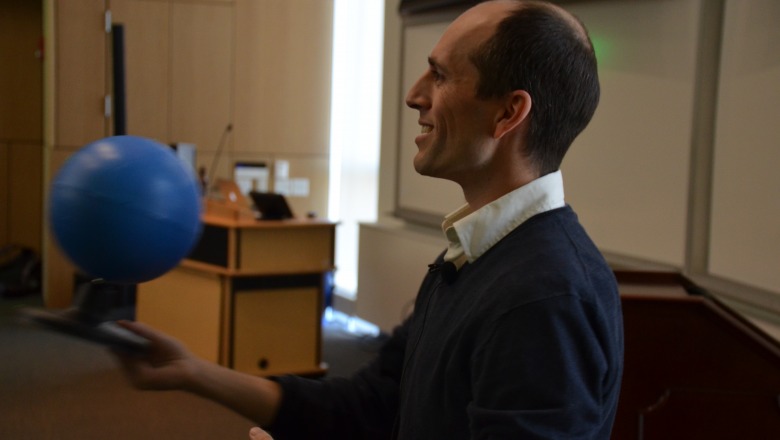
Professor Reid Parsons from the Earth and Geographic Sciences Department has spent years looking at Mars in search of answers to its mysteries. His interest in our planetary neighbor dates back to the years he spent working at NASA before joining the Fitchburg State faculty.
“What’s been happening in the field of Mars science over the last 15 years is we’re beginning to realize the planet has undergone some significant climate change in its history, like Earth did in its ice ages,” Parsons said.
Parsons was part of a team that recently published a paper in the Proceedings of the National Academies of Science that articulates how the Red Planet has experienced five or six ice ages over the past several hundred million years. “To explore the Earth’s climate history, we rely on physical samples like ice cores drilled from ice sheets in Greenland and Antarctica,” Parsons explained. “But those are only 3 million years old. The ice deposits analyzed on Mars are 100 times older than any glacial ice sample found on Earth.”
That analysis came through the exploration of high-resolution images taken by a telescope-grade camera in Martian orbit. Studying how large boulders are clustered on its ice deposits, and where the ice deposits occur, can provide evidence for the number of ice age episodes and how factors like the tilt of the planet’s rotation axis can affect its climate.
“It paints a picture,” said Parsons, whose contributions to the project included ice flow modeling. “Scientists have known for a long time that Earth has undergone significant natural variations in climate. We have various processes that influence the Earth’s climate, from plate tectonics, to ocean circulation, to greenhouse gases. On a very dynamic planet like the Earth, we have so many things going on. What we can gain from studying climate on Mars is there’s a lot less going on in terms of the dynamics. It’s geologically dead, aside from some volcanic activity. But even on a planet where there’s no life, there are no oceans (in recent history), there’s no plate tectonics, we can still see climate change happen because of changes to the tilt of the planet. And interestingly, changes in the tilt of Earth's axis appears to also play a role in causing ice ages here - it's something the two planets have in common.”
Parsons, who enjoys sharing his research interests with his undergraduate students at Fitchburg State, said studying our celestial neighbors helps us appreciate the balance of conditions that make life possible on Earth, and the importance of protecting it. “It really helps us understand how special a place we live on,” Parsons said. “In some sense we’re a cowboy riding a bronco. We do deal with a lot of uncertainty by living on Earth. It’s not in our own collective interest to make that climate volatility even worse by changing the Earth’s temperature.”